Black Eyed Susans are a staple in our perennial garden. We grow five varieties, and each one offers a unique beauty and bright light to the garden. Learn how to grow Black Eyed Susans, also known as rudbeckia, for a cottage garden look.
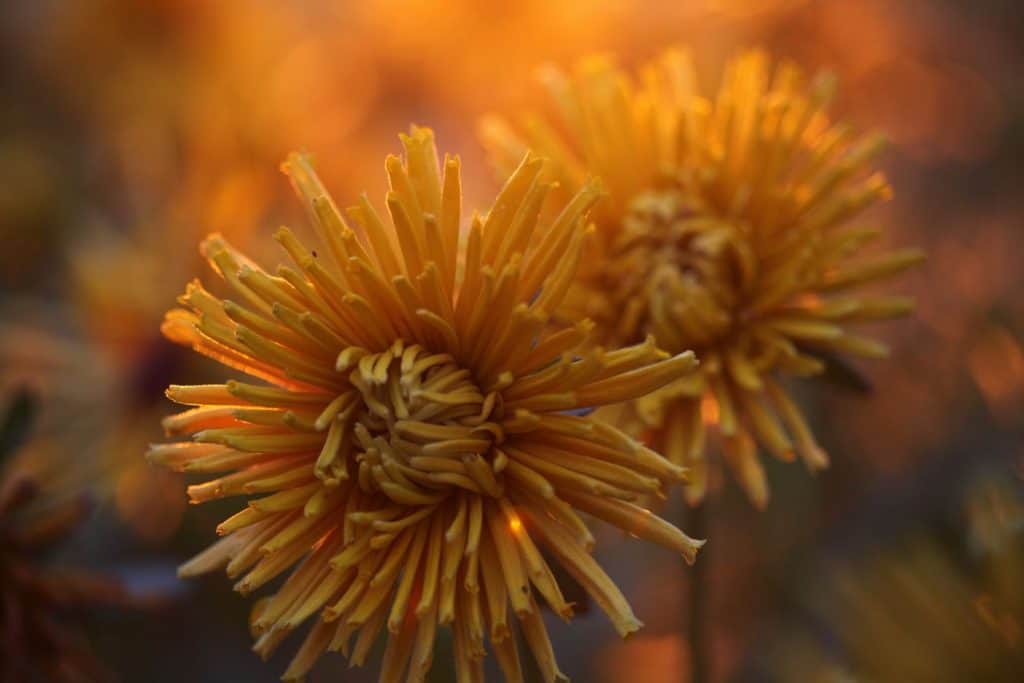
How To Grow Black Eyed Susans
In this post we will review how to grow and care for Black Eyed Susans.
"Black Eyed Susan" is a common name used for a group of plants also known as Rudbeckia.
In this post I will be using the name "Black Eyed Susan" and Rudbeckia interchangeably.
Rudbeckia is a plant genus of the Asteraceae family. This family includes many other daisy like flowers besides rudbeckia (like daisies and sunflowers) that we also grow in our garden.
Within the rudbeckia genus, there are 23 species. Within some of those species, there are quite a few varieties. The list goes on and on.
Black Eyed Susan Varieties
There are many varieties of Black Eyed Susan. Within each rudbeckia species you may find more than one variety.
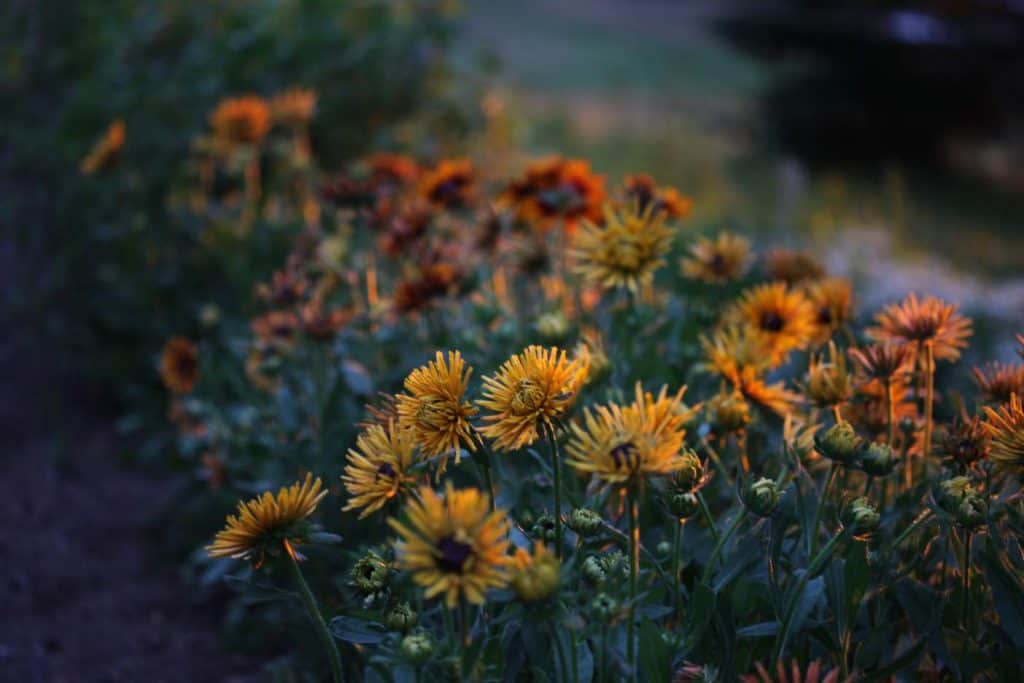
We grow two of the rudbeckia species in our garden, Rudbeckia Hirta and Rudbeckia Triloba.
Of these, we grow five varieties of the Rudbeckia Hirta, and one of the Rudbeckia Triloba.
The Rudbeckia Hirta varieties are all referred to as Black Eyed Susans, although- they don't all have black eyes. They are also known as Gloriosa Daisy, just to make things a little more confusing:).
Rudbeckia Triloba has a delicate tiny yellow bloom with a dark brown eye, and it is referred to as a Brown Eyed Susan, rather than a Black Eyed Susan.
Here Are The Varieties That We Grow In Our Garden:
1. Rudbeckia (Hirta) Cherokee Sunset
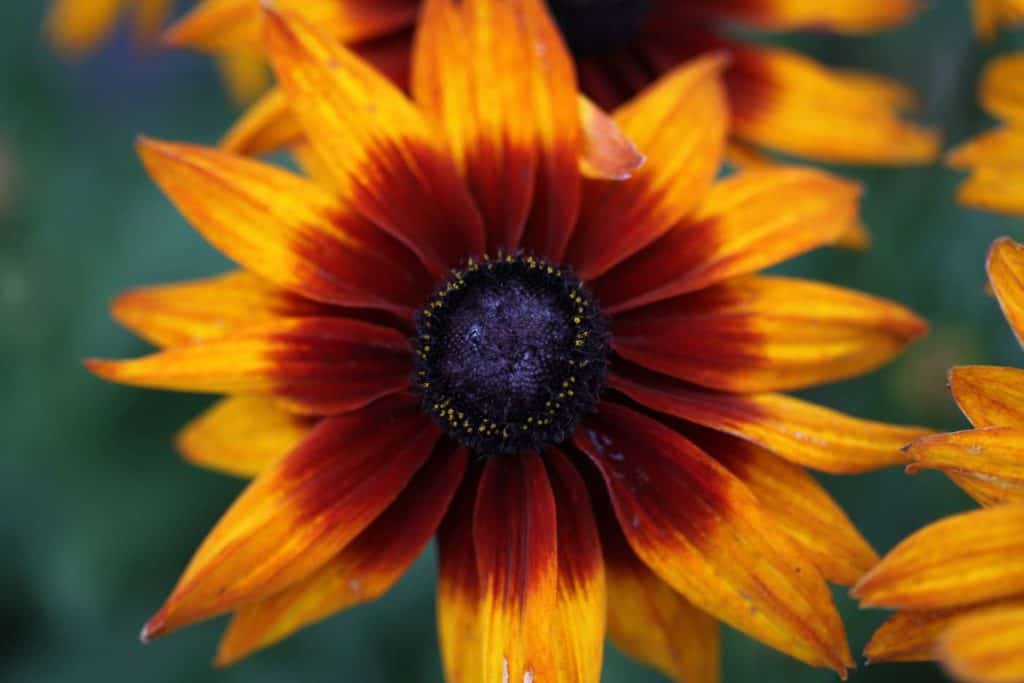
This flower is absolutely amazing. It seems to glow and beckon you, no matter how far away you might be.
It's also a huge flower at approximately six inches in our garden. It was stunning in bouquets.
2. Rudbeckia (Hirta) Chim Chiminee
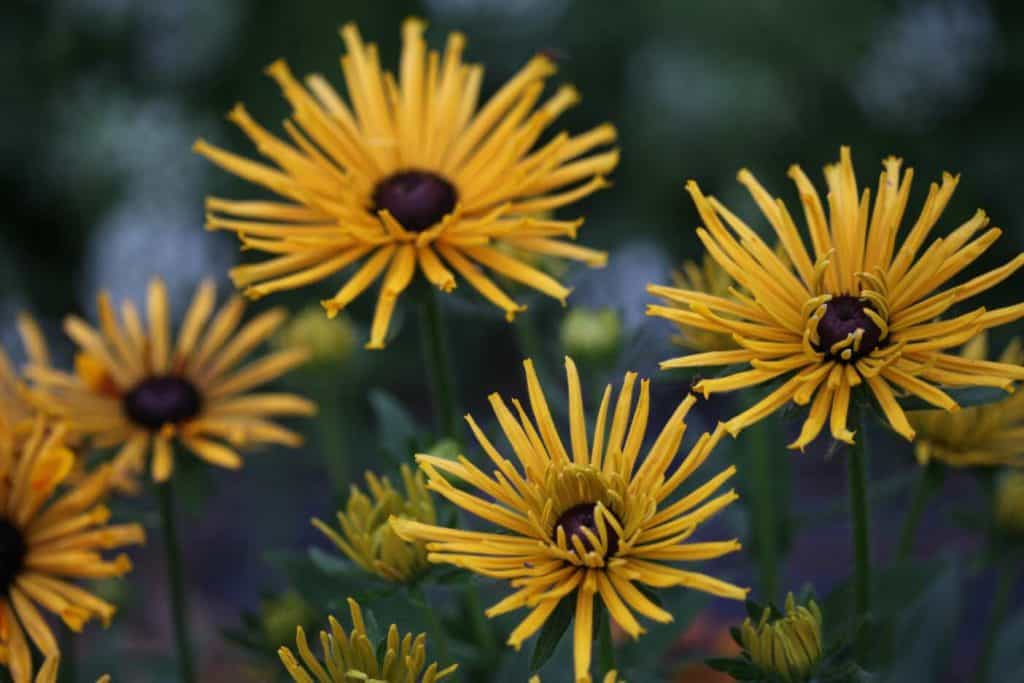
I love the whimsical look of Chim Chiminee. It grew in different shades of yellow and rust.
It was a strong accent flower, and really added to that wild flower and country look in our bouquets, which is generally the look we go for.
3. Rudbeckia (Hirta) Sahara
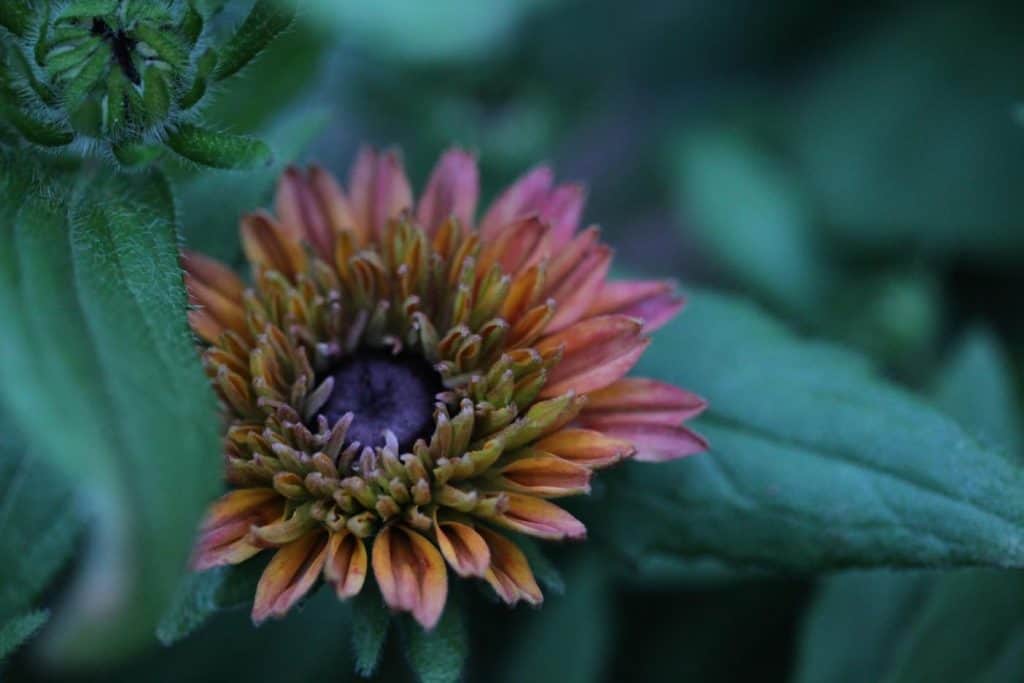
Sahara is such a sweet and romantic flower. It grew in multiple shades of pink and rust mixed with orange and greens.
The petals are multicoloured, and the look is so intriguing. It's a bit shorter than the other varieties in our garden, but we'll take it just as it is!
4. Rudbeckia (Hirta) Indian Summer
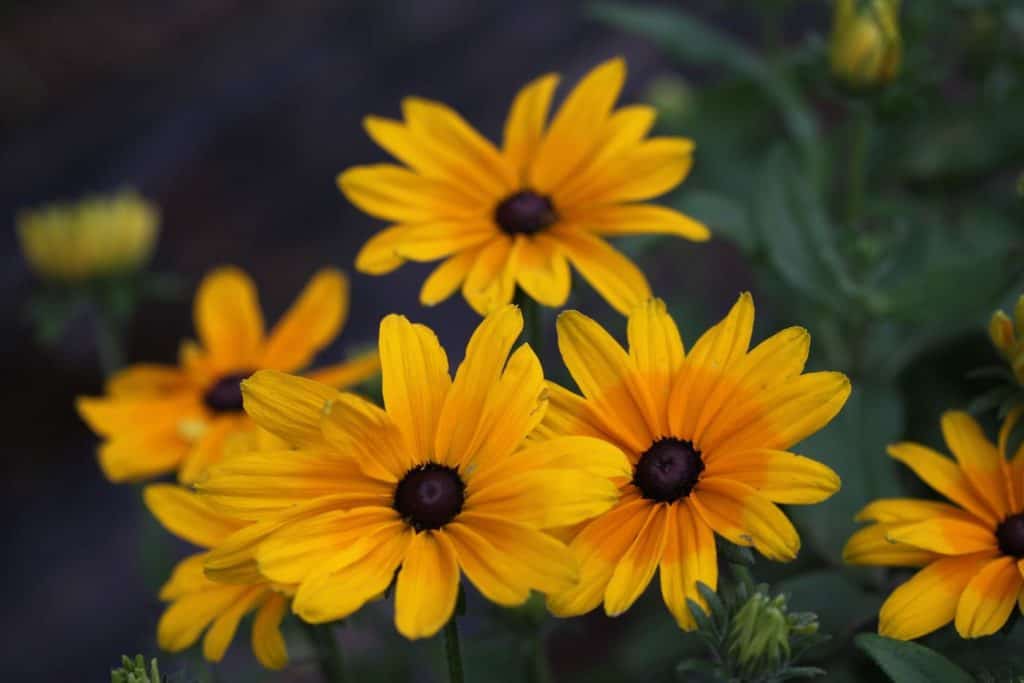
This is another striking Black Eyed Susan, with bright yellow petals and an orange eye. It really pops in the garden.
It looks great when mixed with sunflowers in the vase.
5. Rudbeckia (Hirta) Prairie Sun
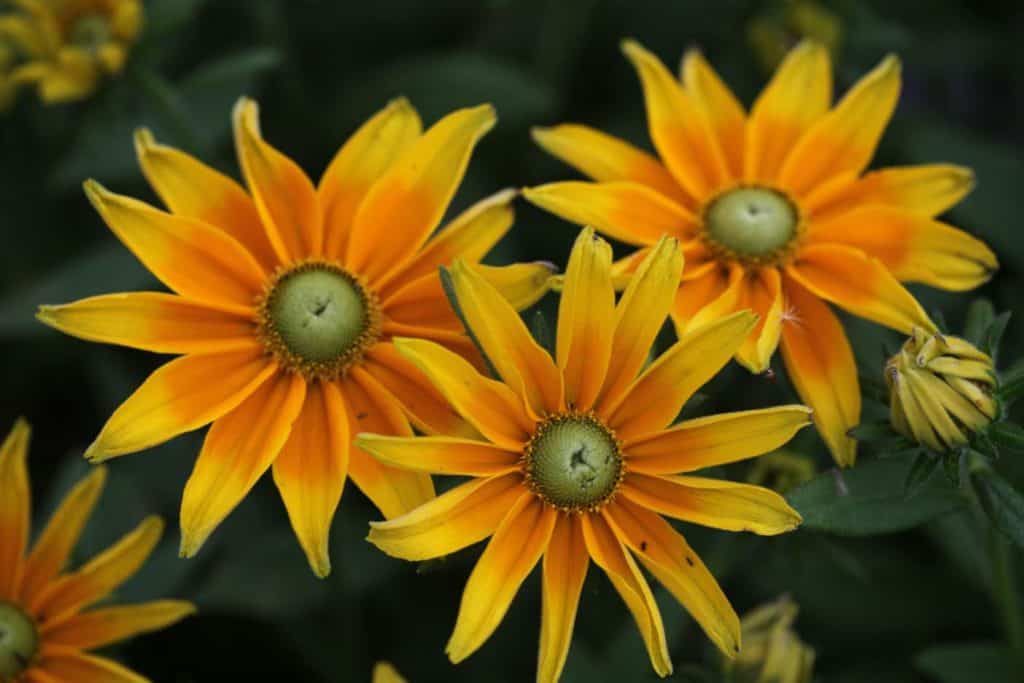
Yes, this is a Black Eyed Susan, although it does not have a black eye!
Rudbeckia Prairie Sun has an amazing chartreuse green eye, which makes it a great accent flower!
6. Rudbeckia Triloba
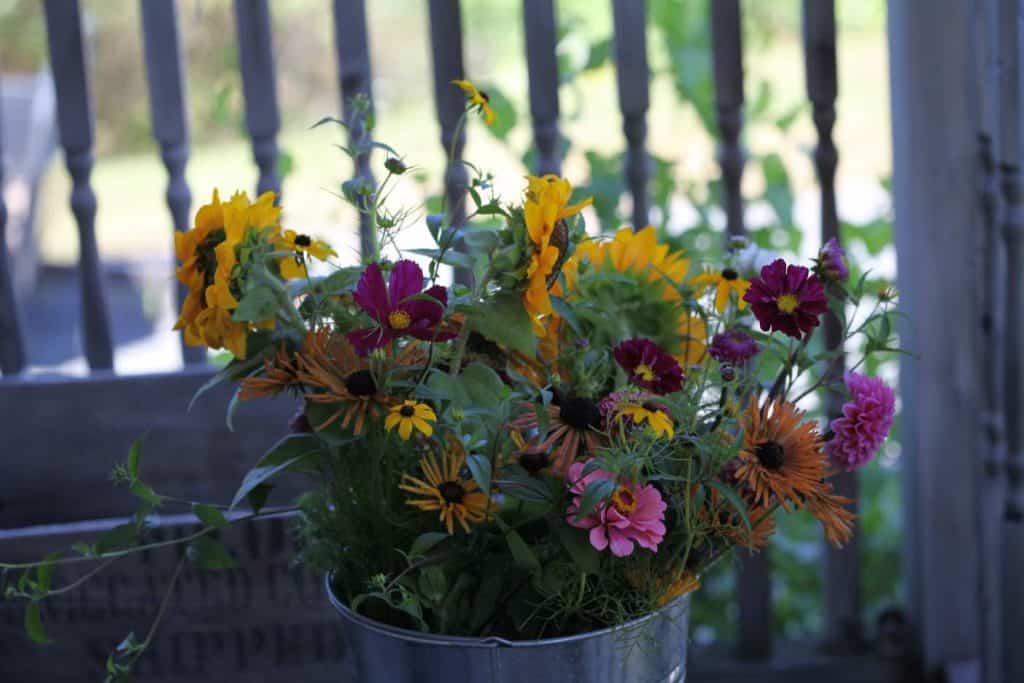
I love rudbeckia triloba! The flowers are little mini-mes of the larger rudbeckias, so dainty and fine, with long airy stems.
I love using this plant for the foliage, even before the flowers are open. It adds an extra special touch to bouquets.
The foliage is a great filler, especially if you run out of filler, and don't normally use this plant in this way. It's a good back up!
What Colors Are Black Eyed Susans?
Black Eyed Susans come in a variety of colours, including yellow, orange, rust and pink, with many shades in between. Usually the flowers have black or brown eyes, however not all black eyed Susans are black eyed. Rudbeckia Prairie Sun has a wonderful pale green eye, but is still considered to be a black eyed Susan.
Are Black Eyed Susans Perennials?
Most Blacked Eyed Susans are perennial, although there are a few annual and biennial varieties. Of the varieties considered to be annual and biennial, they are generally what are known as tender perennial varieties, of which may only last one or two years.
Many of the tender perennial varieties are the ones which we grow in our garden.
The first year we planted Sahara and Chim Chiminee, we planted them as annuals, and they only lasted the summer.
The second year we planted them they had more time to establish well, and survived the following winter. They came back with a vengeance the next spring and summer, growing into large plants with beautiful large blooms.
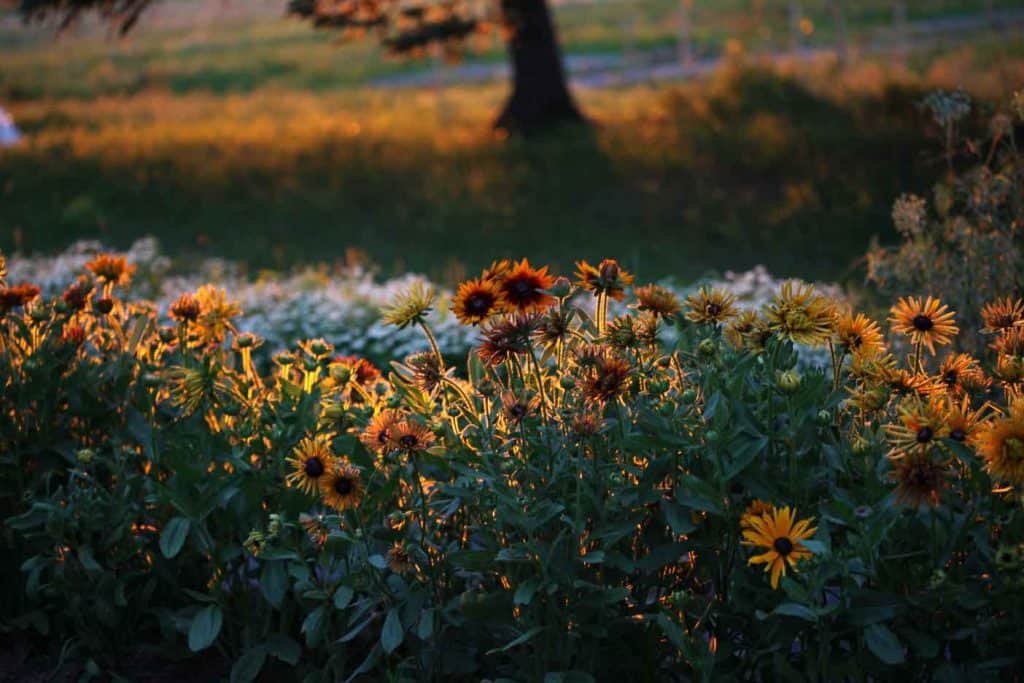
Do Black Eyed Susans Come Back Every Year?
Not all Black Eyed Susans will come back every year. It depends on the planting location, whether the seedling has had a good chance to get established in the garden before winter, and the variety of the plant. Some Black Eyed Susan varieties are considered tender perennials, and therefore may not survive a harsh winter.
Growing Rudbeckia From Seed
When learning how to grow Black Eyed Susans, it's always helpful to learn to grow them from seed.
They are extremely easy to grow from seed.
We grow Rudbeckia from seed indoors in winter. We start the seeds in February and March.
Do Rudbeckia Seeds Need Stratification?
Prior to starting the seeds, the seeds were placed in the fridge in envelopes for several months, since they are perennial. Cold stratification can aide in germination of perennial plants.
The seeds were given a dry cool storage period rather than a moist chill. They germinated well using this technique.
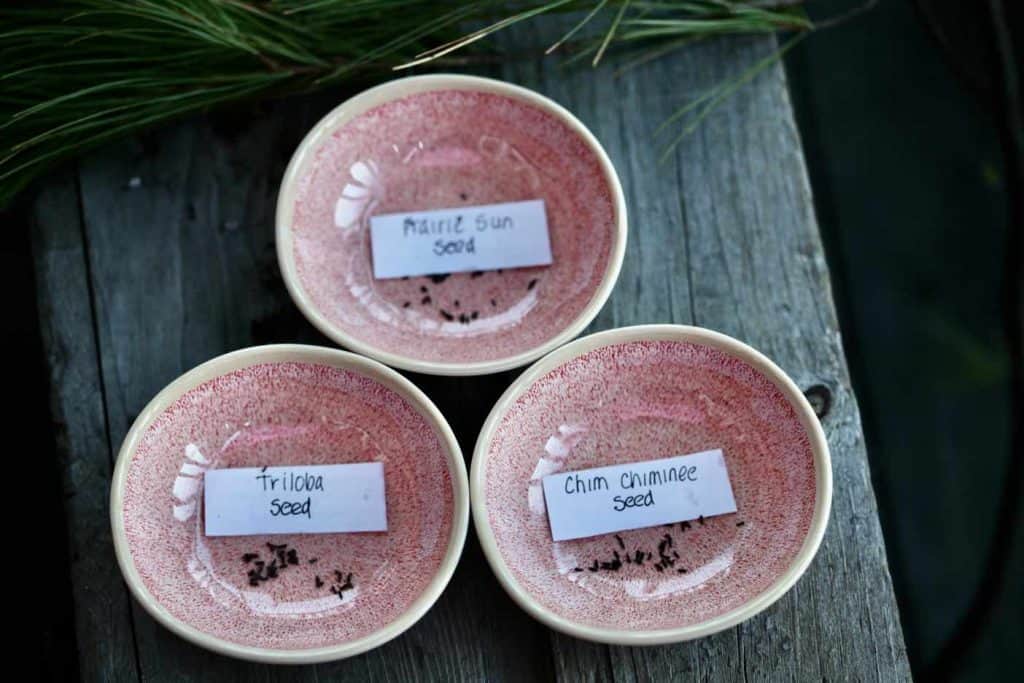
Rudbeckia seeds from different varieties have a very similar appearance. I found them to be indistinguishable to the naked eye.
Even the seeds of rudbeckia triloba, which is a different species, had the same appearance as rudbeckia hirta seeds.
The seeds are small, oblong and black. They have the appearance of little pellets. They are approximately 1/16 of an inch long, or just a little longer.
How To Grow Black Eyed Susans From Seeds Indoors
We start our seeds in winter to give them a head start to the season. These seeds, if started early enough, will grow into plants that will bloom at the end of summer in the year they are planted.
Supplies you will need:
- Planting trays or soil blocks.
- A good sterile seed starting medium.
- Heat mat- these mats are invaluable for germinating seeds indoors.
- Grow lights- to provide necessary light until the plants can be hardened off and placed outside.
- A container that you can fill with water to bottom water your cell trays while the plants are growing inside.
Read a more in-depth explanation on how to start flower seeds indoors in winter here.
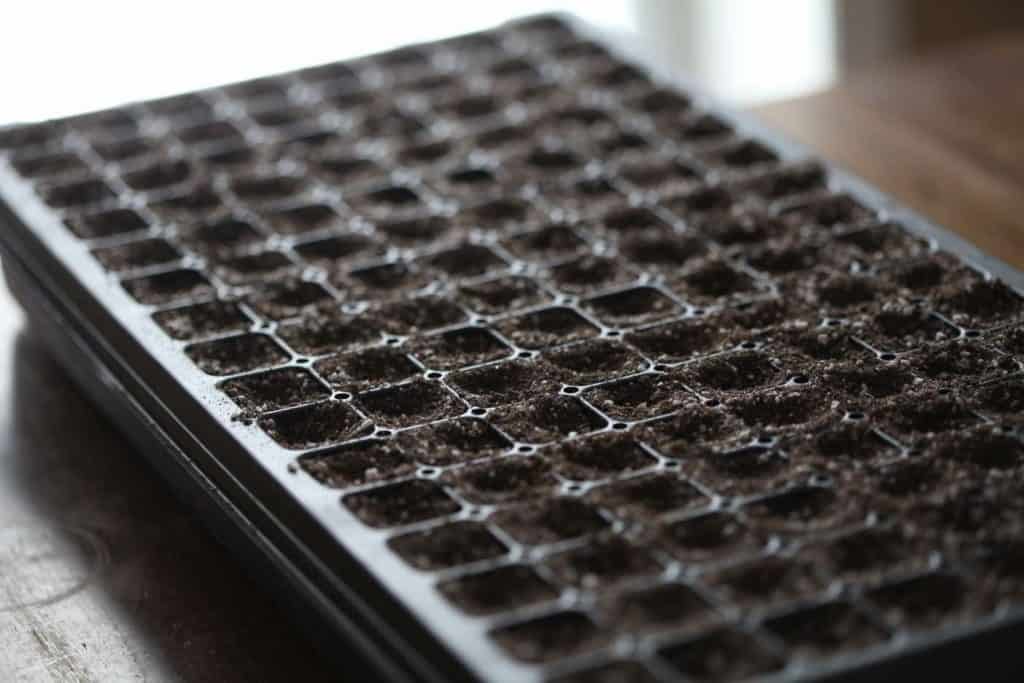
Planting Rudbeckia Seeds
- To start your rudbeckia seeds, first fill your trays with potting soil. We use 72 and 128 cell trays.
- I usually fill with dry soil, and then bottom water once I am finished planting.
- Make a shallow dent in the soil of each cell, creating a little bowl in which to drop the seed. I do this quickly with my finger as I prepare to plant.
- Drop a seed into each cell.
- Rudbeckia seed requires light for gemination, so don't cover with soil.
- You can however cover with vermiculite, which is what I did for the seeds we planted. The light will penetrate through the vermiculite, and the vermiculate will help keep the seeds moist while they germinate.
- Place on a heat mat until sixty percent of seeds have germinated.
- Then place under grow lights until it's warm enough to place them outside, after the risk of all frost has passed.
- Harden-off the seedlings outside before planting into the garden.
Rudbeckia Days To Maturity
Rudbeckia seeds germinate within 8 to 14 days. The plants mature within 100 to 120 days, so approximately four months from planting the seed.
If planted at the beginning of March, we will have blooms by August.
The blooms will be even better if over wintered, and the plants become more mature the following year. We experienced this in our garden, and noticed a big difference in the size of the blooms in the second year.
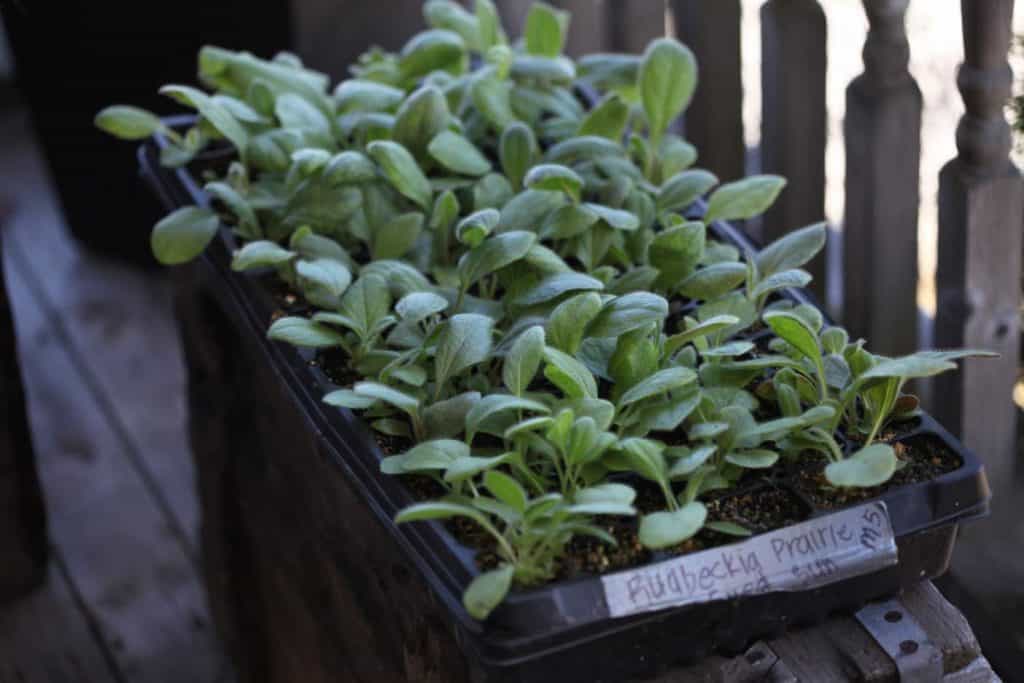
Can I Sow Rudbeckia Seeds In Autumn?
Rudbeckia seeds can be sown outside in autumn, because they are perennial seeds.
The seeds will not germinate until the following spring, when they will begin to grow.
Black Eyed Susan -Sun Or Shade?
Plant Black Eyed Susans in a sunny location in well drained soil.
Our Prairie Sun variety is grown in an area that gets a few hours of shade during the day, and does very well in this location also.
Black Eyed Susan Water Requirements
Black Eyed Susans like well drained soil.
Water well after planting and while they are getting established. After that they require minimal watering, and in our garden they did not need any special irrigation set up.
I noticed that transplanted rudbeckia triloba would wilt slightly when in need of water. After watering they would perk up within hours.
They did this off and on for about a month after transplanting.
In general, rudbeckia can tolerate periods of drought quite well.
I remember my first rudbeckia plants, dug up from the gravel along the roadside where they were growing in dry soil. These plants can be quite hardy in drought like conditions.
They will grow even bigger and better however if given extra fertility and water in the garden.
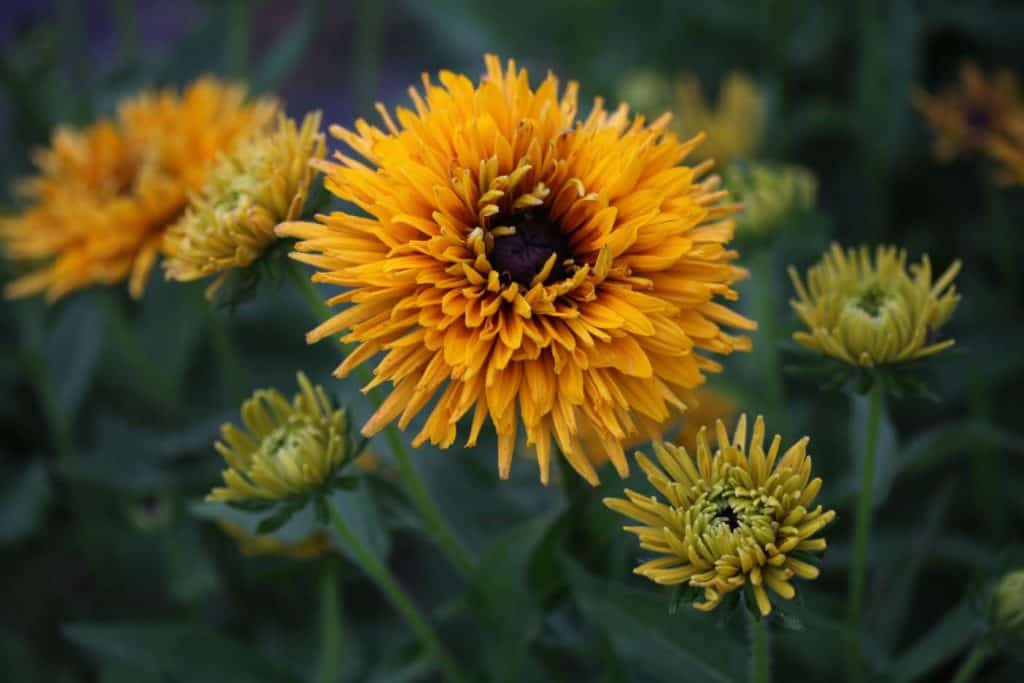
Black Eyed Susan Leaves
Black Eyed Susan leaves are easily identifiable.
Rudbeckia Hirta has leaves which are fuzzy on both the top and bottom aspects of the leaves. The fuzziness is caused by tiny hairs growing on the upper and lower surfaces of the leaves.
Are Black Eyed Susan Leaves Fuzzy?
Not all Black Eyed Susan leaves are fuzzy. It will depend on the species.
Rudbeckia Triloba has leaves that are not as fuzzy as Rudbeckia Hirta.
In fact the first year that the Rudbeckia Triloba returned following winter, I wondered if it was the triloba, because I was anticipating fuzzy leaves, and it didn't have them.
Sure enough, when it bloomed, it was the triloba.
Now I am familiar with the leaves of this rudbeckia plant, and the differences between this and the Rudbeckia Hirta.
One interesting fact about Rudbeckia Triloba Leaves
Part of the plant's name, "triloba", is related to the characteristics of it's leaves at maturity.
At the base of the plant the leaves are shaped with three lobes, tri-loba. The name Rudbeckia triloba is derived from the shape of those leaves.
What Do The Leaves Of Black Eyed Susans Look Like?
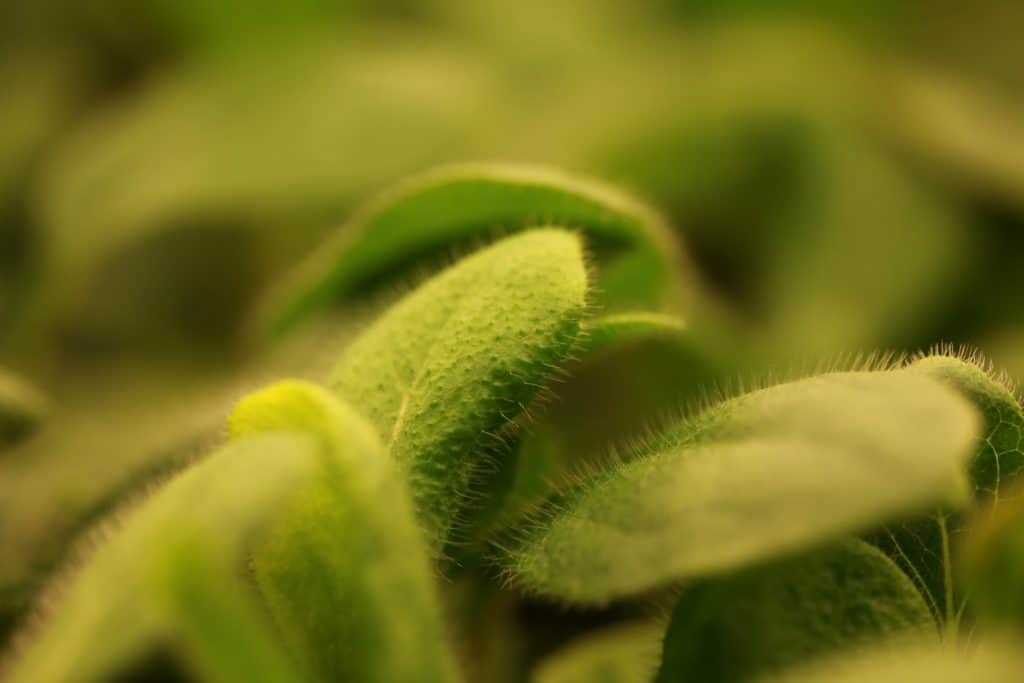
Above in the photo you will see the fine hairs covering the surface of the leaves on Black Eyed Susan Prairie Sun.
The hairs are also present on the underside of the leaves.
Do Black Eyed Susans Self Seed?
Black Eyed Susans produce a large amount of seed from each mature pod, and they will reseed in the area they are planted.
To prevent self seeding, deadhead the spent blooms before they produce mature seed.
If you want to save some flower seeds at the end of the season, make sure not to deadhead all the flowers.
How to Deadhead Black Eyed Susans
To deadhead black eyed Susans, cut off the spent blooms by cutting off the flower stem down to the next set of buds.
Some varieties have single stems that grow up from the base. Deadhead these varieties by cutting the stem down to the base.
Deadheading cleans up the plant and promotes further blooming later in the season.
In addition, it also prevents reseeding of the plant.
Be careful however not to remove too much foliage from the plant while it is still green. The leaves are responsible for provision of energy to the plant for next years growth.
Rudbeckia Winter Care
Black eyed Susans do not require any special care for winter.
You can do a fall cleanup of old foliage in the fall, or wait until spring to do a cleanup. If there is any diseased foliage, it's best to remove.
We like to leave the spent stems and seed pods in place for the birds and wildlife.
Black Eyed Susans, or Rudbeckia, will always have a place in our garden. Now it's time to increase the varieties and species that we grow, to enjoy them even more!
Hope you found this post on how to grow Black Eyed Susans helpful!
If you have any comments or questions, these are always welcome!
Other Posts You May Like:
PIN IT FOR LATER!
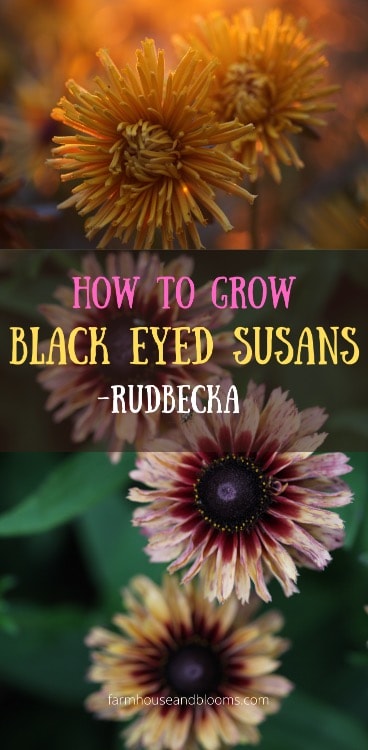
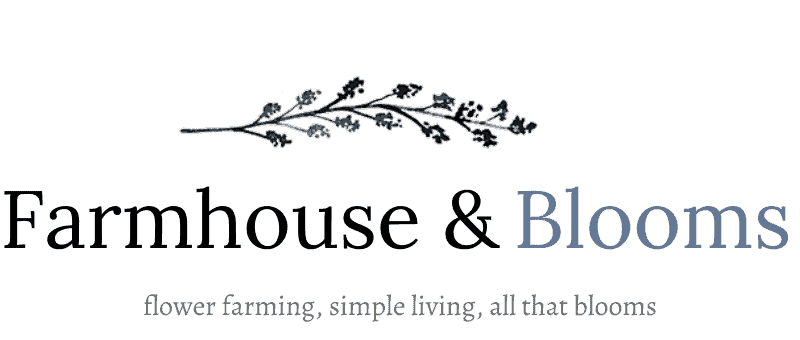

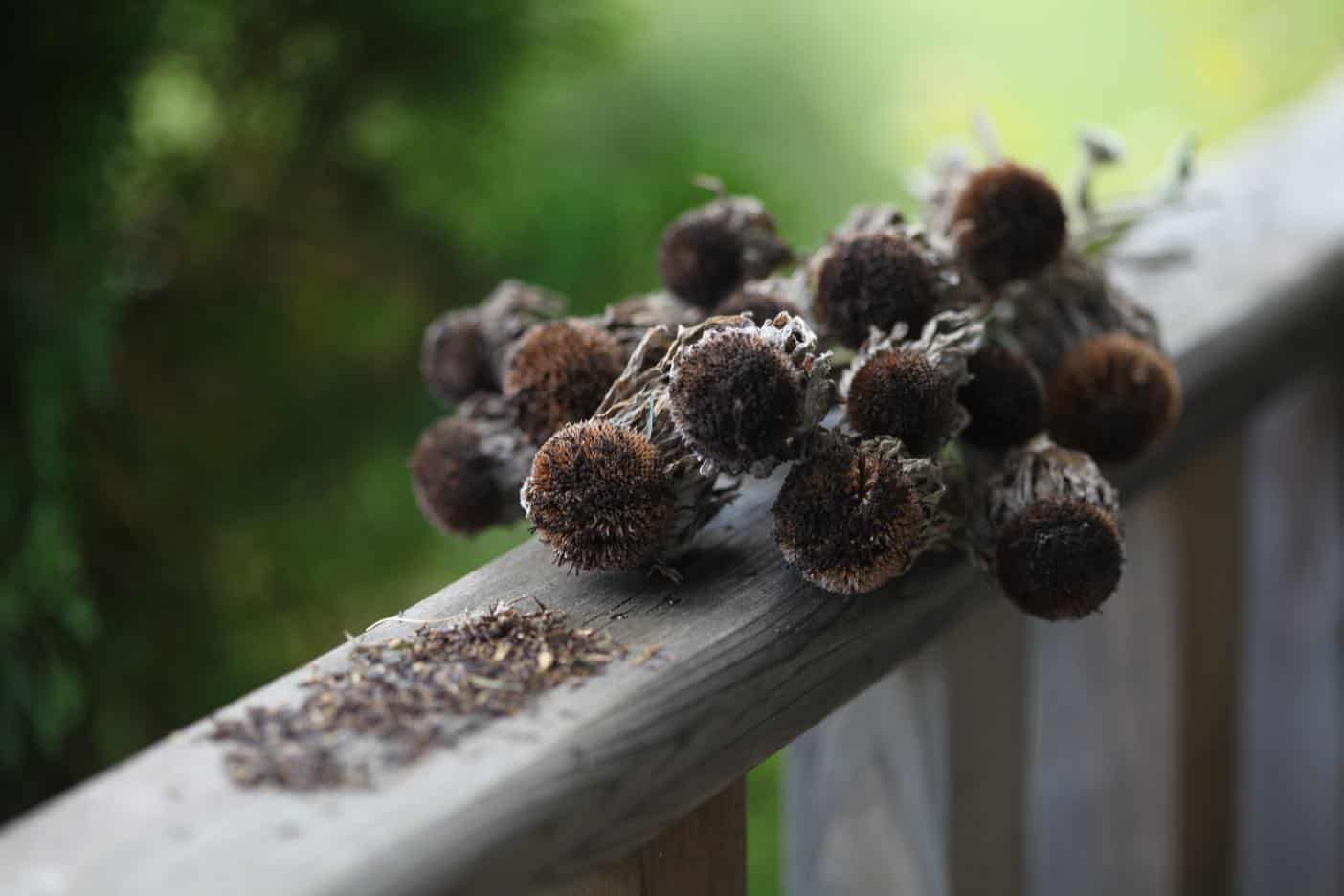
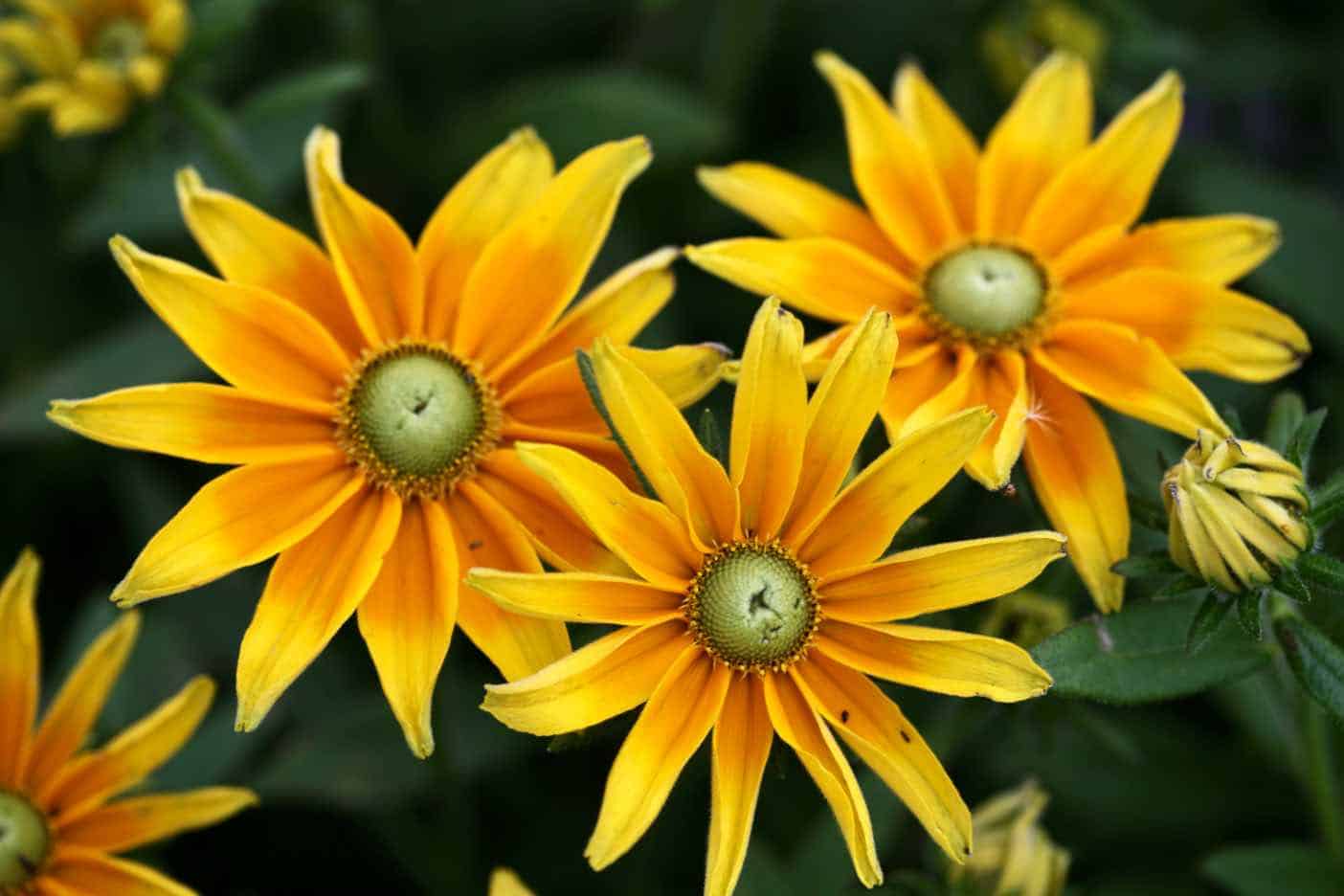
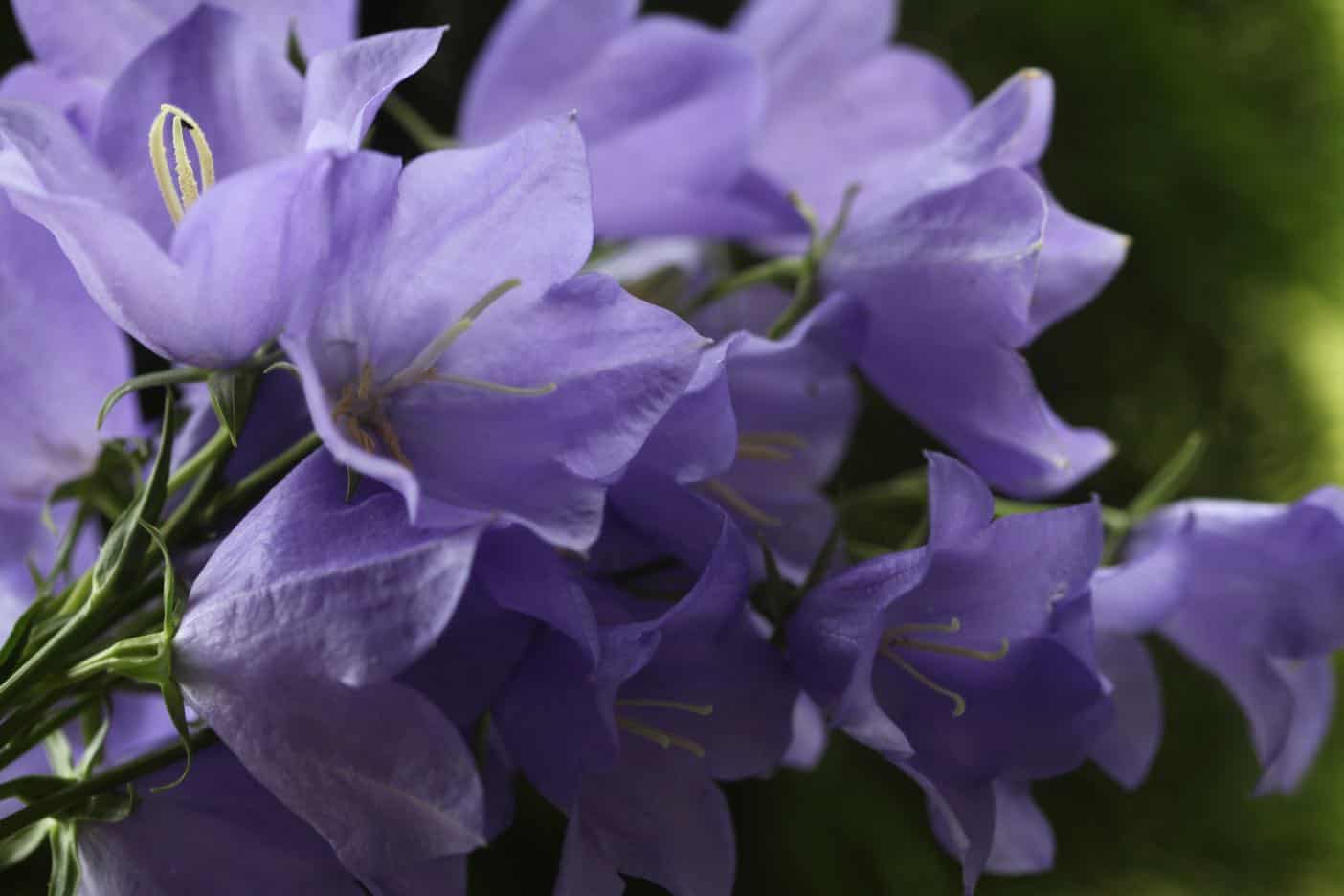
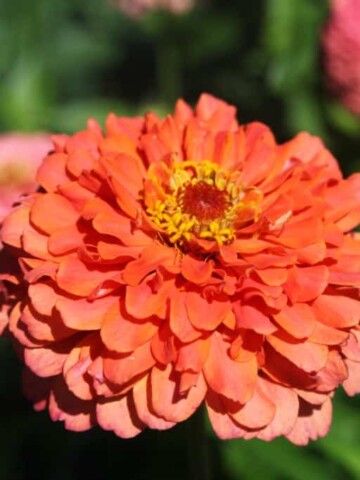



Barbra-Sue Kowalski
My FAVORITE wildflower... I need to plant some!
cheyanne
They are so easy to grow! It is well worth it!
Julie
Stunning photography! Black eyed susans are such a happy and cheerful flower. Very thorough article and growing guide. Can't wait for mine to return this year once it warms up.
Shanna
Blackeyed Susans grow all in the ditches here in northeast Louisiana and I always wish they would grow in my ditch! I don't know why I never thought to just go ahead and grow them! Haha! Thanks so much for sharing!
cheyanne
I have dug them up from ditches and brought them home;)! It sounds like you have perfect growing conditions- Just sprinkle some seeds in your ditch, they probably will grow!
Juliea
What beautiful flowers a d pictures! Great info.... I think you’ve covered it all here. Thank you!
cheyanne
Thanks so much Juliea!
Tonya
Black eyed Susans are some of my favorite flowers! This post is so helpful!
cheyanne
Thanks so much Tonya!